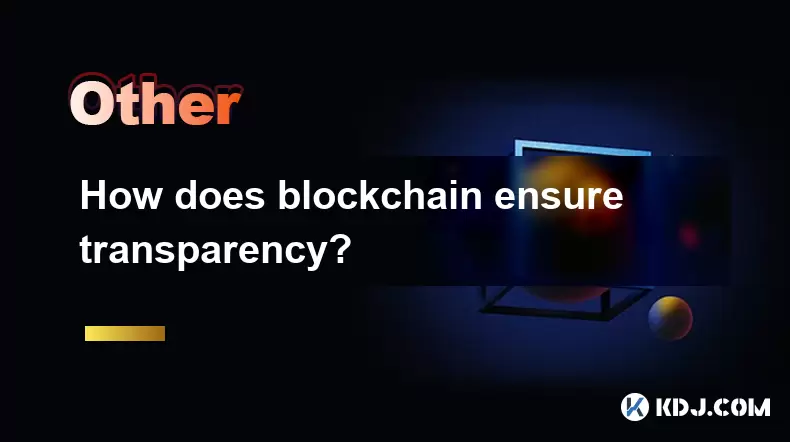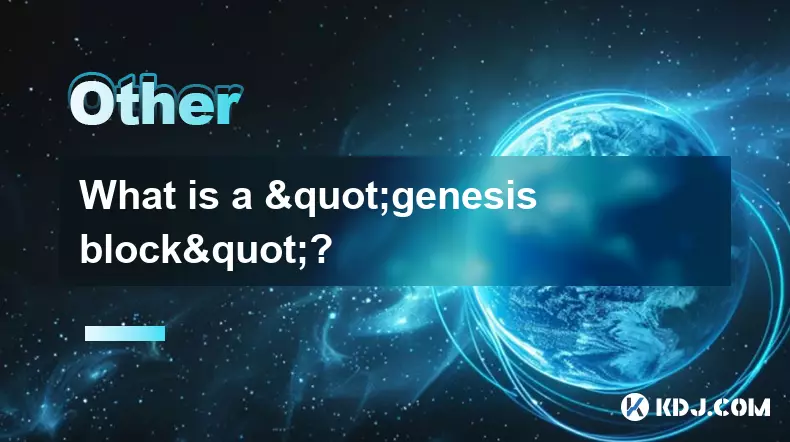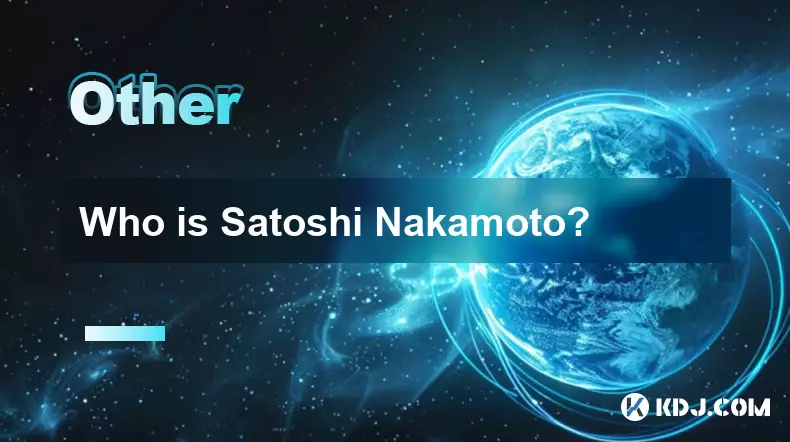-
 bitcoin
bitcoin $99177.955738 USD
-7.32% -
 ethereum
ethereum $3187.183061 USD
-12.38% -
 tether
tether $0.999809 USD
0.00% -
 xrp
xrp $2.117933 USD
-9.42% -
 bnb
bnb $906.710033 USD
-9.17% -
 solana
solana $149.367737 USD
-10.74% -
 usd-coin
usd-coin $0.999816 USD
0.01% -
 tron
tron $0.281498 USD
-0.38% -
 dogecoin
dogecoin $0.156292 USD
-8.00% -
 cardano
cardano $0.500744 USD
-10.19% -
 hyperliquid
hyperliquid $38.087358 USD
-4.58% -
 chainlink
chainlink $14.097831 USD
-8.54% -
 bitcoin-cash
bitcoin-cash $463.329916 USD
-9.22% -
 ethena-usde
ethena-usde $0.999078 USD
-0.01% -
 unus-sed-leo
unus-sed-leo $9.475862 USD
-0.79%
How does blockchain ensure transparency?
Blockchain ensures transparency through a decentralized, immutable ledger where all transactions are visible, verifiable, and permanently recorded across a network, preventing tampering and enabling trustless auditability.
Aug 04, 2025 at 09:36 pm

Understanding Blockchain as a Transparent Ledger
Blockchain technology ensures transparency by functioning as a decentralized and immutable digital ledger that records all transactions across a network of computers. Unlike traditional financial systems where data is stored in centralized databases controlled by institutions, blockchain distributes copies of the ledger to every participant in the network. This means that every transaction is visible to all authorized participants, and no single entity has exclusive control over the data.
The core design of blockchain relies on cryptographic hashing and consensus mechanisms. Each block contains a list of transactions, a timestamp, and a reference to the previous block through a unique hash. This chaining mechanism ensures that altering any transaction would require changing every subsequent block across all copies of the ledger—a practically impossible task without network-wide consensus. Therefore, the integrity and visibility of data are preserved, enabling full transparency.
Role of Public and Private Keys in Transaction Visibility
In blockchain networks, users interact through public and private key cryptography. Every participant has a public key, which acts as their wallet address, and a private key, which serves as a secure password to authorize transactions. While identities are not directly exposed, all transactions associated with a public address are permanently recorded on the blockchain and can be viewed by anyone.
For example, on public blockchains like Bitcoin or Ethereum, anyone can use a block explorer to look up a wallet address and view its transaction history, balance, and interactions with smart contracts. This level of openness ensures that financial activity is traceable and auditable without revealing personal information. Even though the system protects user privacy through pseudonymity, the transparency of movement of assets remains intact.
Consensus Mechanisms and Trustless Verification
One of the foundational elements that enable transparency is the consensus mechanism—the process by which network participants agree on the validity of transactions. In Proof of Work (PoW) and Proof of Stake (PoS) systems, nodes validate transactions and compete or are selected to add new blocks. These validations are broadcast to the entire network, allowing every node to independently verify the block’s contents.
- Nodes download and verify each block against network rules
- Transactions are checked for double-spending and correct digital signatures
- Once confirmed, the block is appended to the chain and replicated across nodes
Because every participant can independently verify the state of the ledger, there is no need to trust a central authority. This trustless environment reinforces transparency, as malicious or incorrect entries are immediately detected and rejected by the network.
Immutability and Auditability of Records
Once data is written to a blockchain, it becomes virtually impossible to alter. This immutability stems from the cryptographic linkage between blocks. If someone attempts to modify a transaction in a past block, the hash of that block changes, invalidating all subsequent blocks. To make such a change accepted by the network, an attacker would need to control more than 50% of the network’s computing power (in PoW) or staked tokens (in PoS), which is economically and technically infeasible in large, decentralized networks.
This permanence allows for complete audit trails. Regulatory bodies, auditors, or users can go back through the entire history of transactions to verify authenticity. For instance, in supply chain applications built on blockchain, every step—from raw material sourcing to delivery—can be recorded and verified by all stakeholders. The uneditable nature of the ledger ensures that records cannot be tampered with, enhancing transparency across complex systems.
Smart Contracts and Transparent Execution
On platforms like Ethereum, smart contracts are self-executing agreements with terms directly written into code. These contracts are deployed on the blockchain and run exactly as programmed, without interference or downtime. Because the code is publicly accessible, anyone can inspect how a contract operates before interacting with it.
When a user triggers a smart contract, the transaction and its outcome are recorded on the blockchain. This includes input parameters, execution path, and resulting state changes. For example:
- A decentralized finance (DeFi) lending protocol’s interest rate calculations can be audited in real time
- Token distribution rules in an initial coin offering (ICO) are transparent and automatically enforced
- Voting mechanisms in decentralized autonomous organizations (DAOs) are publicly verifiable
This open execution model eliminates hidden logic or backdoor manipulations, ensuring that all participants see the same rules and outcomes.
Transparency in Permissioned vs. Permissionless Blockchains
While permissionless blockchains like Bitcoin and Ethereum offer full public transparency, permissioned blockchains (such as those used by enterprises) provide transparency within a controlled environment. In permissioned systems, access to view the ledger is restricted to authorized participants, but within that group, all members can see the same data.
Even in these private networks, transparency is maintained among participants. For example, a consortium of banks using a shared blockchain can all monitor transaction settlements in real time, reducing reconciliation needs. The rules of data access and modification are predefined and enforced by the network, ensuring that no single member can alter records without detection.
Frequently Asked Questions
Can blockchain transparency compromise user privacy?While blockchain transactions are transparent, user identities are protected through cryptographic addresses. Personal information is not stored on the chain. However, if a public address is linked to a real-world identity (e.g., through an exchange), transaction history can be traced. Privacy-focused blockchains like Monero or Zcash use advanced cryptography to obscure transaction details while maintaining verifiability.
How can I verify a transaction on the blockchain?Use a block explorer such as Etherscan for Ethereum or Blockchain.com for Bitcoin. Enter the transaction hash or wallet address to view details like amount, timestamp, sender, receiver, and confirmation status. This process requires no login and is available to anyone globally.
Does transparency mean anyone can edit the blockchain?No. Transparency refers to the ability to view data, not modify it. Only authorized participants can initiate transactions, and all changes must be validated by the network. Once confirmed, data cannot be altered, ensuring that transparency does not compromise security.
Are all blockchains equally transparent?No. Public blockchains offer full transparency to anyone. Private or consortium blockchains limit visibility to approved members. While internal transparency is maintained among participants, external parties cannot access the data. The level of openness depends on the network’s design and governance model.
Disclaimer:info@kdj.com
The information provided is not trading advice. kdj.com does not assume any responsibility for any investments made based on the information provided in this article. Cryptocurrencies are highly volatile and it is highly recommended that you invest with caution after thorough research!
If you believe that the content used on this website infringes your copyright, please contact us immediately (info@kdj.com) and we will delete it promptly.
- Bitcoin's Wild Ride: Saylor, Kiyosaki, and the Quest for $200K
- 2025-11-05 10:50:13
- Culex, Cardano, and Aster: A Crypto Cocktail of Mosquitoes, Dips, and CZ Fuel
- 2025-11-05 11:00:17
- Crypto Presales, Coin Growth, and Established Coins: Navigating the 2025 Buzz
- 2025-11-05 11:00:17
- La Culex, Crypto Investment, and Pudgy Penguins: A NYC Perspective
- 2025-11-05 10:30:13
- Zcash Defies Crypto Crash: Reversal Risk on the Horizon?
- 2025-11-05 11:00:01
- Score Big with BetMGM: NBA, NFL, and the TOP150 Bonus Code
- 2025-11-05 08:50:13
Related knowledge

What is a block explorer and how do you use it?
Oct 24,2025 at 12:36am
What Is a Block Explorer?1. A block explorer is a web-based tool that allows users to view and analyze data on a blockchain network in real time. It f...

What is the "hash rate" of a blockchain network?
Oct 10,2025 at 03:55pm
Understanding Hash Rate in Blockchain Networks1. The hash rate refers to the total computational power being used to process transactions and mine new...

What is a "genesis block"?
Oct 15,2025 at 07:55pm
Understanding the Genesis Block in CryptocurrencyThe genesis block is the very first block in a blockchain network. It serves as the foundation upon w...

Who is Satoshi Nakamoto?
Oct 15,2025 at 01:01pm
Who is Satoshi Nakamoto?1. Satoshi Nakamoto is the pseudonymous individual or group credited with creating Bitcoin, the first decentralized cryptocurr...

How does blockchain technology actually work?
Oct 11,2025 at 02:36pm
Understanding the Core Mechanism of Blockchain1. At its foundation, blockchain is a decentralized digital ledger that records transactions across mult...

What is a token economy?
Sep 20,2025 at 12:18am
Understanding the Foundations of a Token Economy1. A token economy in the context of cryptocurrency refers to a system where digital tokens are used a...

What is a block explorer and how do you use it?
Oct 24,2025 at 12:36am
What Is a Block Explorer?1. A block explorer is a web-based tool that allows users to view and analyze data on a blockchain network in real time. It f...

What is the "hash rate" of a blockchain network?
Oct 10,2025 at 03:55pm
Understanding Hash Rate in Blockchain Networks1. The hash rate refers to the total computational power being used to process transactions and mine new...

What is a "genesis block"?
Oct 15,2025 at 07:55pm
Understanding the Genesis Block in CryptocurrencyThe genesis block is the very first block in a blockchain network. It serves as the foundation upon w...

Who is Satoshi Nakamoto?
Oct 15,2025 at 01:01pm
Who is Satoshi Nakamoto?1. Satoshi Nakamoto is the pseudonymous individual or group credited with creating Bitcoin, the first decentralized cryptocurr...

How does blockchain technology actually work?
Oct 11,2025 at 02:36pm
Understanding the Core Mechanism of Blockchain1. At its foundation, blockchain is a decentralized digital ledger that records transactions across mult...

What is a token economy?
Sep 20,2025 at 12:18am
Understanding the Foundations of a Token Economy1. A token economy in the context of cryptocurrency refers to a system where digital tokens are used a...
See all articles










































































